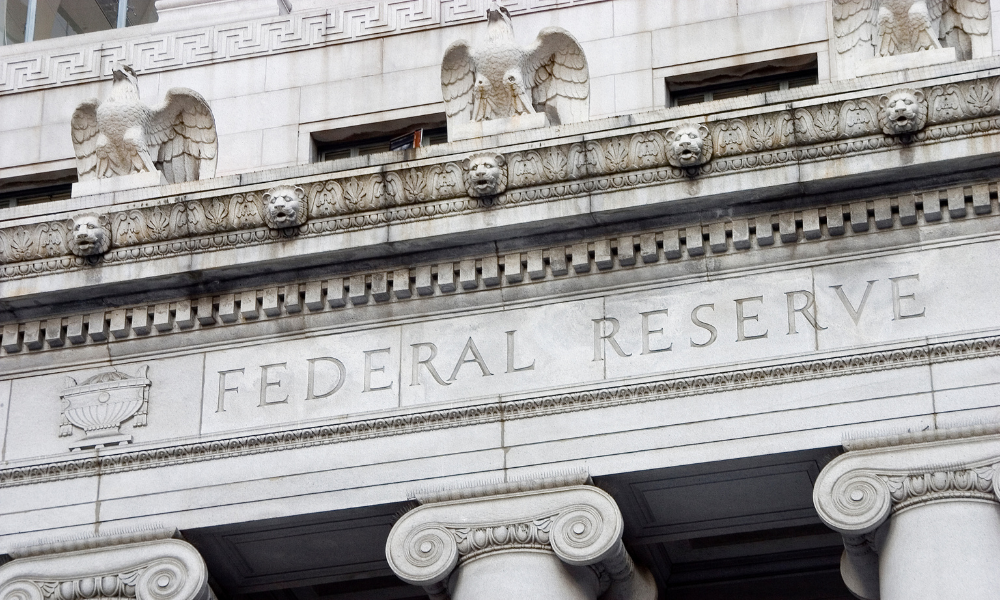China's struggles, looming US federal election, and higher-for-longer rate outlook pose risks for the Great White North, says Guardian Capital LP

As the world continues to navigate the long shadow of COVID, the tail end of a decades-high bout of inflation, the ebbing of globalization, and the legacy of historically aggressive rate hikes over the past couple of years, the word “unprecedented” will probably still get some mileage during the 2024 outlook season.
But with the benefit of 20/20 hindsight on post-2020 events, as well as fewer uncertainties on the economic horizon, investors across Canada are entering a new year with a relatively narrower range of scenarios than they’ve had to consider in a while, says one economist.
“I would argue that we are entering a scenario where there is less uncertainty than we've had in these recent years,” says David Onyett-Jeffries, Vice President, Economics & Multi Asset Solutions at Guardian Capital LP (pictured above). “We have a firmer grasp on the macro backdrop.”
Central banks have created ‘a different beast’
Compared to the stomach-churning 18 months of rate hikes investors endured since March 2022, Onyett-Jefferies says the path forward for interest rates is much clearer, with the underpinnings of inflation developing in a more predictable fashion. Today’s economic picture, he adds, is much less foggy compared to 2020 and 2021, when the world groped through a once-in-a-century global pandemic.
But expanding the frame to include pre-2020, he says the world is still living in an era of elevated uncertainty. From that perspective, he says the aggressive and practically synchronized actions of central banks to boost interest rates to re-establish price stability have given rise to “a different beast” – bearish in shape, but quite distinct from bear markets of years past.
“The response of the global macro economy has been distinctly different from what people were anticipating,” Onyett-Jeffries says. “For much of the last couple of years, especially in 2023, we’ve persistently seen economic forecasts starting off low, only to be later revised higher … and analysts have just kept kicking that can down the road.”
Focusing on Canada, he says that as a small open economy, the Great White North is very much susceptible to influences outside its borders. Given its reliance on the commodity sector, he says events in China – the world’s top commodity consumer – carry a lot of weight.
“China is going through some difficult transitions with its own domestic economy as it’s trying to dig itself out of significant problems,” Onyett-Jeffries says.
The Chinese government has been attempting to stabilize its domestic economy by pumping stimulus into the system, and there were high hopes of a resurgence following the easing of zero-COVID policies in the country. Despite an initial boom, Onyett-Jeffries says those measures to arrest China’s economic slide have not gained much traction.
“If you go back to 2018 and 2019, all roads of the global supply chain went through China. And in 2020, we realized that as much as it styles itself as a normal Western economy, it’s still a command economy that can shut things down and keep them shut down when it wants,” he says. “So to maintain resiliency in their supply chains, we’ve seen all these businesses diversifying away. … The geopolitical tensions between the US and China aren’t necessarily helping that fact either.”
As a North American neighbour to the US, Onyett-Jefferies says Canada has been a natural beneficiary of its efforts at friendshoring. He argues that the resiliency of the US economy, and the US consumer in particular, has significantly supported Canada over the past few years. But with the coming general election in 2024 and a rise in “made in US” rhetoric south of the border, he says that could change.
In Canada, rates top domestic risks
On the domestic front, Onyett-Jefferies sees interest rates as the top risk for Canadians. While the job market snapped back to life after the COVID shutdowns, he argues that the resulting income growth did not translate into proportional growth in spending, generating an “excess” of savings. The fact that savings remain elevated, he contends, could explain why the Bank of Canada’s rate hikes haven’t been as effective in quelling inflation as expected, and why it’s had to take more drastic steps at the expense of Canadian borrowers.
“Canadian consumers are very much exposed to interest rates compared to the US where the average mortgage is at a 30-year fixed rate. Generally, the term in Canada is a five-year fixed rate,” he says. “We had this big wave of refinancing activity when interest rates were close to zero. This is a scenario which isolates a lot of consumers as we move forward.
“Rates are so much higher than they were, and the likelihood is that they’re going to stay higher for longer,” Onyett-Jeffries says. “Pressures on households are going to grow, and businesses as well. Because of the related negative wealth spillover effects – particularly as housing markets have slumped pretty aggressively – we’re seeing investment and economic activity start to slow.”
While the Canadian market has, so far, been buoyed by its tight labour market, a softening in jobs could force already-pressured households to cut back further on their discretionary spending. In the extreme worst case, that would set off a negative cycle of economic stagnation.
“If rates stay where they are for too long, it’s going to create a strong domestic headwind,” Onyett-Jeffries says. “If you take that with the geopolitical backdrop and uncertainty around what’s going on outside Canada’s borders … that really poses a risk.”



